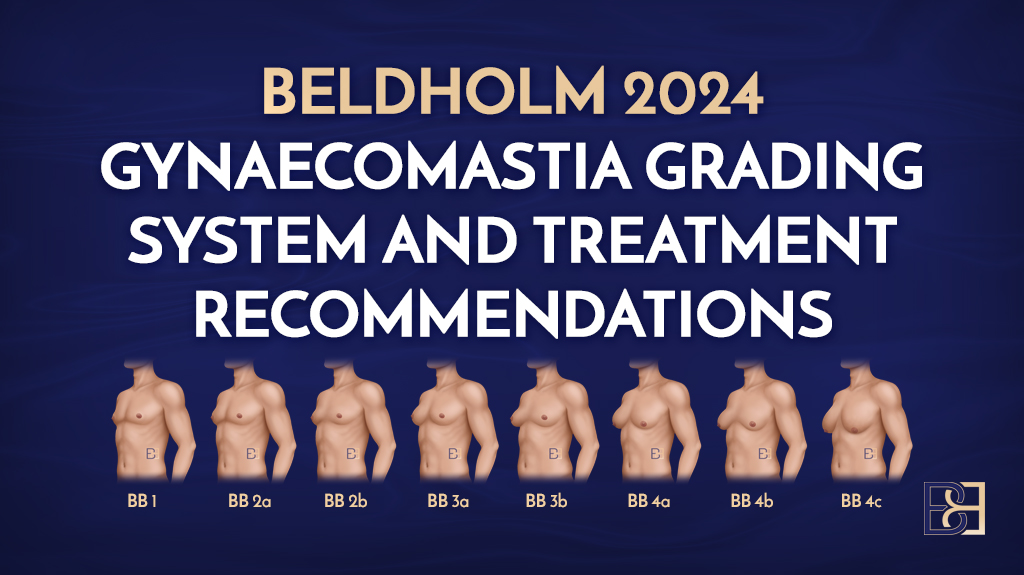According to a study conducted by Bernard F. Simon, M.D., Saul Hoffman, M.D., and Sidney Kahan, M.D. (Ref 2) in 1973, gynaecomastia is the most common breast condition among males, accounting for more than 65% of all breast-related disorders in men. Commonly caused by an imbalance between the hormones oestrogen and testosterone, an enlargement of breast tissue in males often leads to a swollen appearance in the chest area, causing pain and tenderness in some sufferers.
A study conducted on young men in a Navy hospital during World War II found that most young males with gynaecomastia cited embarrassment as the primary concern of the condition, with some experiencing pain and tenderness as well. (Ref 1)

Book your appointment online now
Historical Background of Gynaecomastia Surgery
The Simon article dives deep into the historical background of gynaecomastia surgery, indicating that early treatments for the condition date back as far as the 16th century. (Ref 4)
In the early 1930’s, as more modern approaches developed, surgeons suggested that male breasts should be left alone unless the patient insists for cosmetic reasons. If surgery was warranted, however, the thought was that because the nipple was unnecessary to a male patient, elliptical excision of the nipple, areola, and breast tissue was recommended. (Ref 3)
In the 1940’s, intra-areolar incision for excision of gynecomastia combined with the removal of the hypertrophied gland became the gynecomastia procedure of choice. (Ref 1)
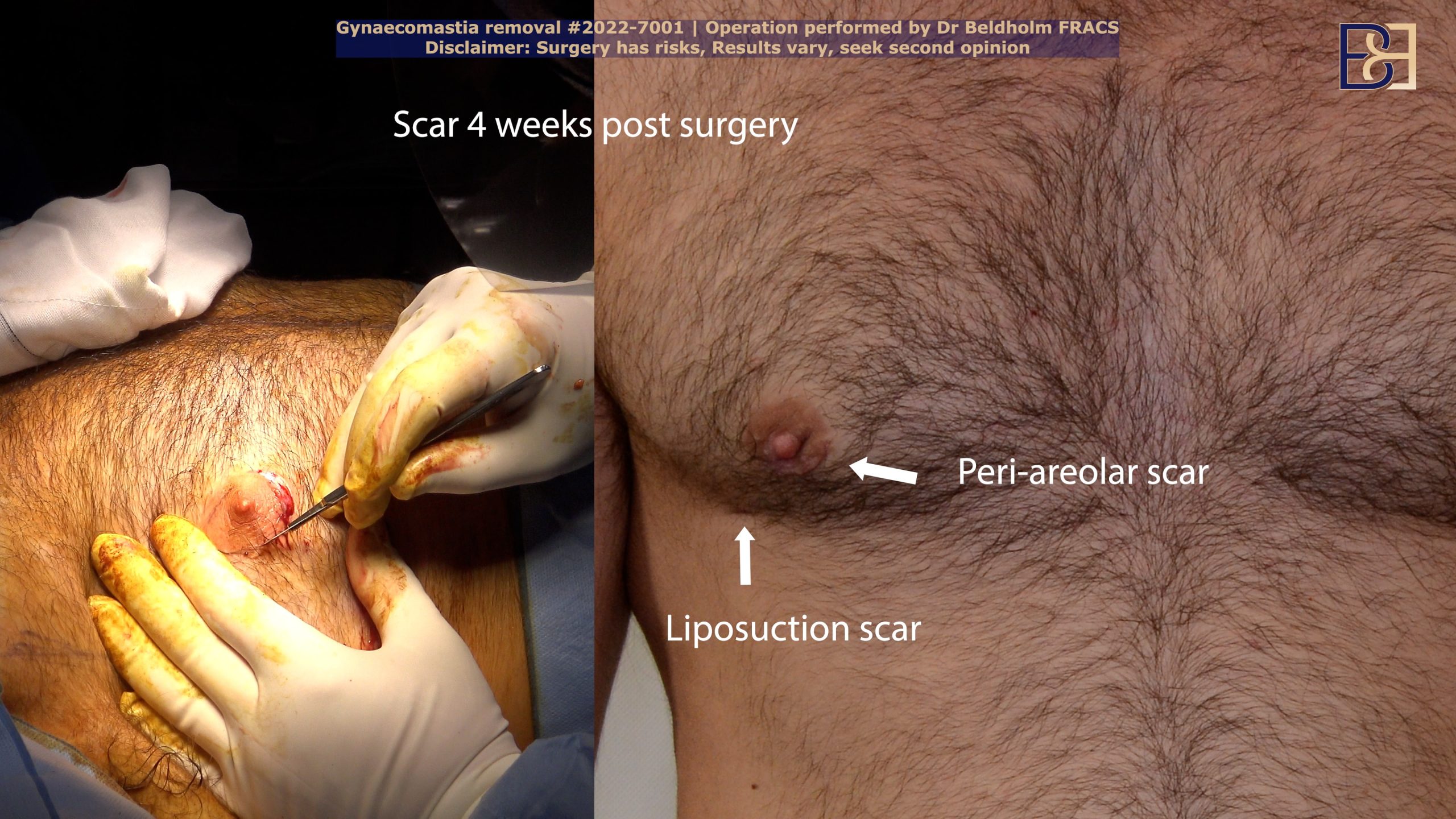
Simon Recommendations
Presented at the Annual Meeting of the American Association of Plastic Surgeons on May 16, 1972 in Salt Lake City, the Simon study made several new recommendations based on the historical treatment for the disorder (Ref 2).
Condemnation of Nipple Removal
One of the most remarkable changes was the condemnation of nipple removal, even in the most severe cases of gynecomastia, suggesting that removal of the nipple would cause severe deformity that could be worse than the original condition.
Location of Incisions
Simon also concluded that incisions outside of the areola should be avoided and noted that some conditions are too severe for the usual method of subcutaneous mastectomy.
Less Severe Cases
When it comes to the less severe cases presented in adolescent men, Simon suggested that if the condition does not subside on its own after two years, surgery may be indicated.
Scarring and Deformities
Though gynaecomastia can vary widely from patient-to-patient, early treatments did not ** the importance of scarring and deformities, focusing more on the breast volume alone. As such, Simon placed a greater emphasis on aesthetics and patient **.
Grading System
The most significant aspect of the Simon article, unique for its time, was the defining of classifications and treatments based on grades of severity. The authors of the Simon article, developed in 1973, classified the disorder from a surgical viewpoint, taking both skin redundancy and breast size into account.
Simon Gynaecomastia Grading System
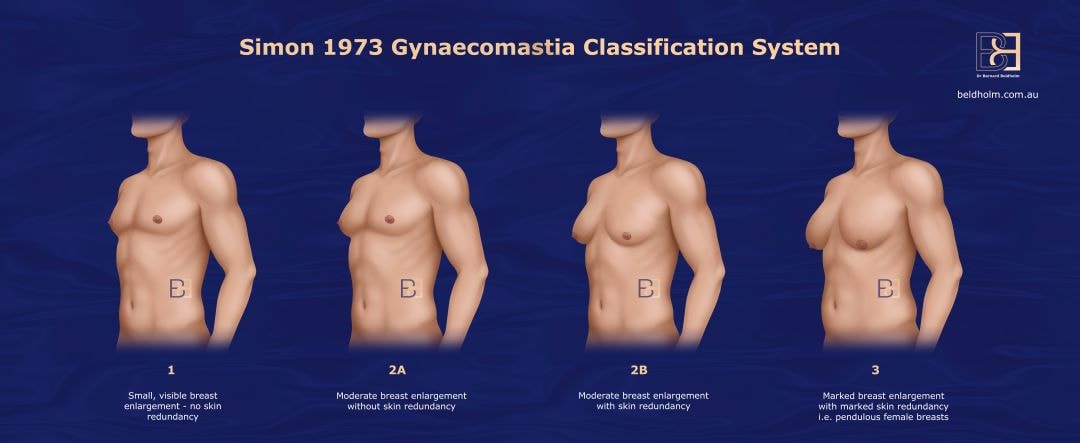
Grade 1 Simon Gynaecomastia Grading System (1973)

- Presentation: Small, visible breast enlargement – no skin redundancy
- Treatment: Subcutaneous mastectomy through infra-areolar incision
Grade 2A Simon Gynaecomastia Grading System (1973)
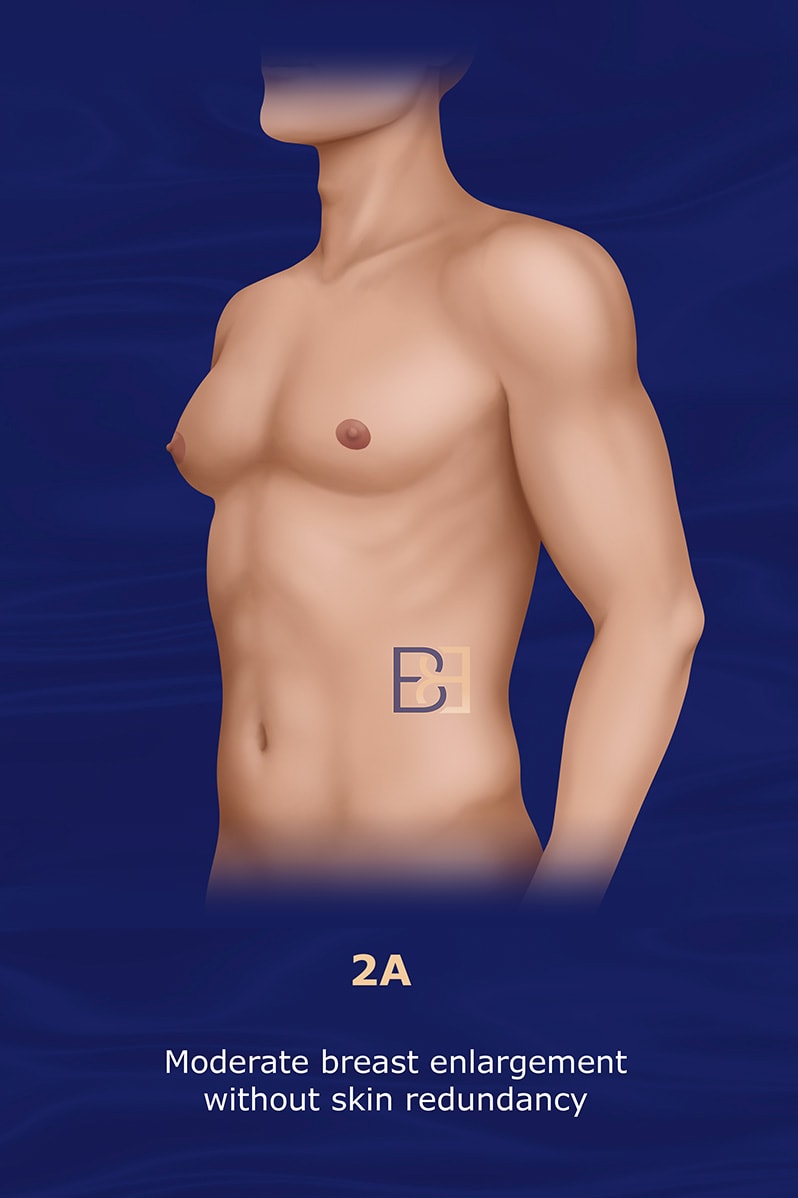
- Presentation: Moderate Enlargement Without Skin Redundancy
- Treatment: Subcutaneous mastectomy through infra-areolar incision
Grade 2B Simon Gynaecomastia Grading System (1973)
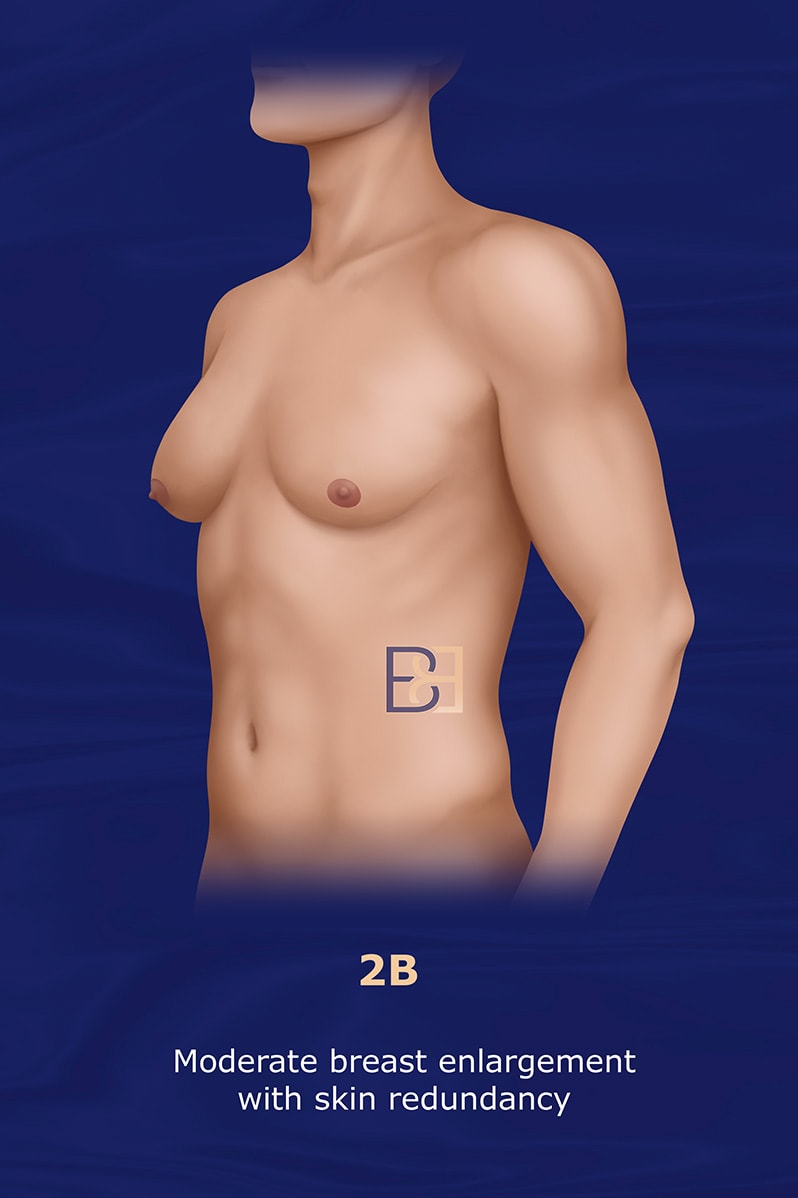
- Presentation: Moderate Enlargement With Skin Redundancy
- Treatment: Subcutaneous mastectomy through supra-areolar incision; Excision of skin above areola in semi-circle
Grade 3 Simon Gynaecomastia Grading System (1973)

- Presentation: Severe chest enlargement with marked skin redundancy (i.e., pendulous female breasts) tissue extends beyond the areola with excess skin.
- Treatment: Excision of skin and glands; staged approach

Advantages of the Simon System
Simon pioneered a system which recognized the importance of chest aesthetics, scarring, and deformities, in sharp contrast with earlier treatments that removed the man’s nipple due to the lack of necessity.
The Simon classification system for gynaecomastia, which characterised the condition based on severity, offered clear benefits to both physicians and patients, as it offered standardised approaches to diagnosis and treatment planning. Below are the primary advantages:
Clear Categorization of Severity
Divides gynaecomastia into four grades, ranging from mild to severe, helping to assess the extent of the condition and guide treatment decisions.
Improved Treatment Planning
By categorising gynaecomastia into specific grades, physicians are able to tailor treatment plans to the severity of the individual’s condition, ranging from non-surgical options for lower grades to more extensive surgery for more severe cases involving excessive skin and fat tissue.
Enhanced Communication Between Surgeons and Patients
The classification provides a standardised language for physicians to explain the condition to patients, aiding in managing expectations.
Facilitates Surgical Technique Selection
Each grade has different requirements for skin removal, glandular excision, and fat reduction, allowing surgeons to choose the best surgical technique for the grade, optimising results, minimising scarring, and decreasing recovery time.
Useful for Research and Data Collection
Widely used in clinical studies, the Simon classification allowed researchers to assess the outcomes of different treatments based on grade, providing valuable data for developing new treatments and techniques.

Disadvantages of the Simon Classification System
While the Simon classification system for gynaecomastia has been widely used over the years due to it’s standardised framework, it also has some limitations:
Limited Scope:
The Simon classification focuses mainly on the physical presentation, i.e., size and skin excess, and does not account for other factors like tissue composition or potential underlying causes like hormonal imbalances and drug use, limiting its usefulness in comprehensive treatment planning.
Lack of Personalization:
Because the classification does not consider individual patient factors such as body type, chest shape, and skin elasticity, it is less useful in tailoring treatment to an individual’s needs.
No Psychological Considerations
With the potential for significant psychological effects, particularly adolescent and young adult patients, the Simon system does not assess the psychosocial impact associated with gynaecomastia. As every patient presents with their own set of physicxalattributes, the same holds true for emotional or psychological characteristics which can vary widely for patients, even those within the same grade category.
Insufficient Guidelines for Surgical Techniques
Although the classification provides general guidelines for assessing severity, it does not offer specific protocols for surgical techniques, requiring surgeons to rely on other resources or professional experience to determine the appropriate combination of glandular excision, liposuction, and skin removal.
Ambiguity
- There is some ambiguity between grades, especially between IIa and IIb or IIb and III, as they are differentiated by terms such as “slight” or “marked” excess skin. This can lead to inconsistent grading and impact the course of treatment.
- Limited for Modern Approaches
- Since it was developed in 1973, the Simon classification has not been updated to incorporate modern diagnostic tools, such as ultrasound for tissue composition analysis, or newer, less invasive treatment options, like VASER (suction-assisted lipectomy) liposuction. As such, it may not align with current treatment approaches.
Despite certain limitations, the Simon classification is still used today as a tool by surgeons when evaluating gynaecomastia. Many surgeons, however, use it as a guide and supplement additional assessment methods to provide a more holistic, modern, and individualised approach to diagnosis and treatment.
Dr. Beldhom’s Final Thoughts on the Simon Classification System

Dr Bernard Beldholm (MED0001186274) M.B.B.S B.Sc (Med) FRACS, a registered medical practitioner, is an experienced specialist surgeon, focusing on body contouring surgery. Dr Beldholm has performed a range of cosmetic surgical operations over the last 15 years, with a current focus on post-weight loss concerns, including a wide range of Gynaecomastia and torsoplasty approaches.
Dr Beldholm’s holistic and comprehensive approach to treating the whole person when determining suitability for this procedure. Recognising the importance of alleviating emotional suffering, re-engaging socially, and increasing the patient’s level of functionality.
Dr Beldholm has studied the various Gynaecomastia classification systems extensively, and has come up with the following conclusions and opinions about the Simon classification system.
- Antiquated: As this system was developed over 50 years ago and has not been updated to incorporate modern treatment tools, such as VASER liposuction, it may not have as much value to present-day clinicians.
- Unacceptable results by modern standards: The results, which include a significant amount of saucer deformity, would not align with modern criteria.
- Subjective: There is ambiguity between grades, especially between IIa and IIb or IIb and III, as they are differentiated mainly by terms such as “moderate” excess skin.
- No mention of psychological impact among the grades: The Simon classification grading system does not consider the psychological or social impact associated with the different grades of gynecomastia which can vary widely even with similar levels of severity.
References
- Webster, G. V.: Gynecomastia in the Navy. Mil. Surgeon, 95: 375-379, 1944.
- SIMON, B.E., HOFFMAN, S. and KAHN, S., 1973. Classification and surgical correction of gynecomastia. Plastic and reconstructive surgery, 51(1), pp.48-52.
- Menville, JG: Gynecomastia Arch Surg,, 26-1054, 1054-1083, 1933.
- Paulus Aegienta: the Seven Books of Paulus Aegineta: Vol 2, Book 4, Sec 46, p. 332, 1538.




